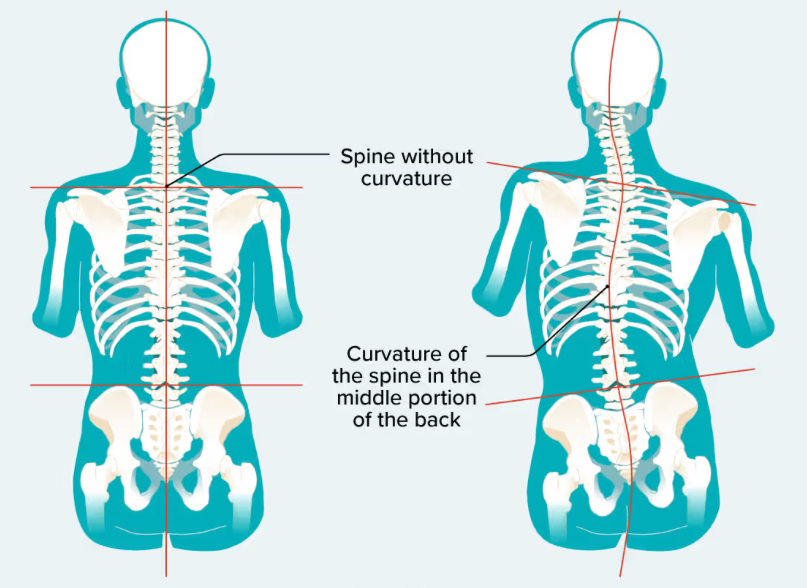 |
Eye abnormalities leading to ocular torticollis weaken over time through compensatory body posture, resulting in scoliosis, which can cause doctors to ignore problems with ocular muscles, the researchers argued in their paper. Photo: Jason Hoffman/Healthline. Click image to enlarge. |
Editor’s Note: As part of our “Year in Review” retrospective, we’ve selected the top 30 news stories of the year and are re-sharing them as we close out 2023. Follow along as we count down to number 1!
This story was originally published October 27, 2023.
No. 21 biggest news story of 2023:
Vision and spinal disorders would seem to originate from very different causes. However, this may not be the case, at least with adolescent scoliosis, as it is often accompanied with clinical vision problems of myopia, astigmatism, strabismus, amblyopia, horizontal paralysis and blindness. Furthering this connection, those with genetic defects have a greater probability of suffering from both spinal and vision problems than those with nongenetic defects. Consequently, researchers wanted to investigate this potential relationship, pulling data from studies conducted in China on adolescent scoliosis, eye diseases, myopia, strabismus, spinal disorders and vision problems for almost three decades. After reviewing the literature, the study investigators could point to a “confirmed […] potential relationship between adolescent scoliosis and vision problems.”
One relationship they were able to ascertain was with scoliosis and myopia. The myopia rate in middle and high school students in China was higher in females, which is also the case for scoliosis. Another study outlined that incidence of scoliosis was greater for females and those with myopia in Chaozhou City. What’s more, myopic children were 1.49 times more likely to develop scoliosis than their nonmyopic peers. As another study speculates, poorer vision may lead to less time spent outdoors and thus more sedentary activity exacerbating symptoms of adolescent idiopathic scoliosis (AIS). Even more evidence points to this connection with pediatric patients experiencing high myopic complications. After the children were assessed for spinal morphology, it was revealed that multiple musculoskeletal system deformations, including scoliosis, were more common in this high myopic population than in controls.
When considering pathological signs of myopia, subfoveal choroid has been shown as thinner in myopes. One study similarly assessed choroidal thickness in individuals with AIS and found similar lower choroidal thickness, on average, than with the control group, indicating a certain correlation between the two disorders.
Another outlined relationship was with horizontal gaze palsy and other eye movement disorders. Horizontal gaze palsy with progressive scoliosis (HGPPS) is an autosomal recessive disorder stemming from mutation of the ROBO3 gene, exhibiting features of congenital horizontal palsy, progressive scoliosis and ametropia. The gene is thought to cause musculoskeletal changes during development of scoliosis. As for the palsy, it may be due to the gene regulating the midline crossing the posterior axons in the brain, thus relaying abnormal inputs.
HGPPS is part of the differential diagnosis for strabismus divided into the non-commonality subcategory. One study followed patients undergoing strabismus surgery and found thoracic scoliosis was more common in patients aged seven to nine and those with exotropia.
Other relationships were found, too. These included secondary scoliosis with ocular torticollis, Goldenhar syndrome, which exhibits various ocular effects and scoliosis and vision loss as a result of spinal surgery. While none of these neatly elucidate the underlying mechanisms of the two systems’ relationship, they do glimpse at a better understanding of the pathways between them.
As the authors relay, “the case-control study, genetic study and long-term follow-up should be employed in future studies so that the underlying mechanism and relationship between scoliosis and vision problems can be elucidated clearly.”
Pan Y, Zhang H, Ye X, et al. Study on the relationship between scoliosis and vision problems: a narrative review. Medicine. October 20, 2023. 102(42):p e35178. |

